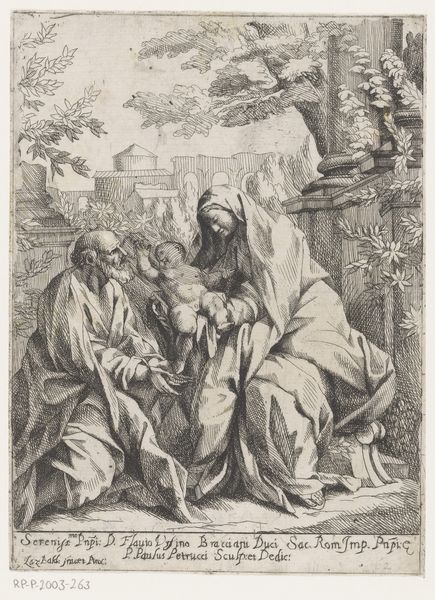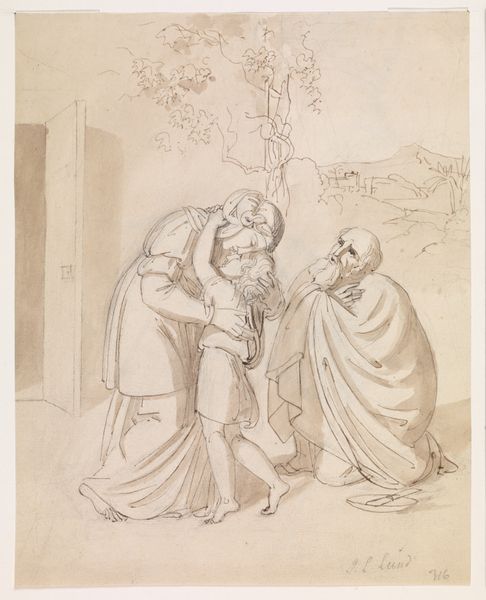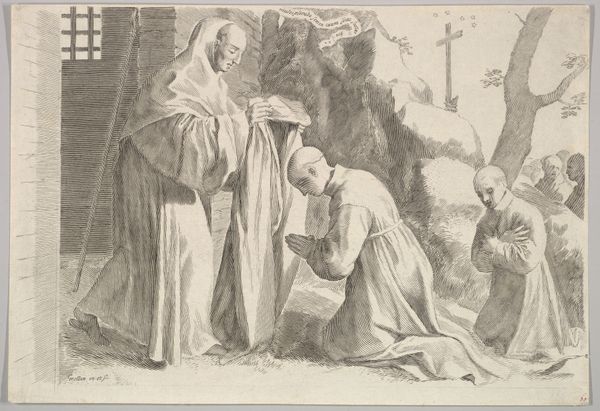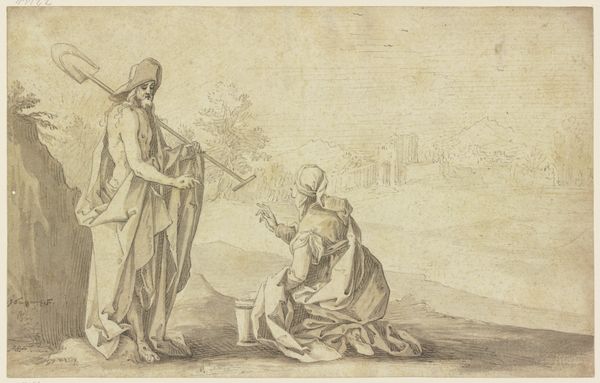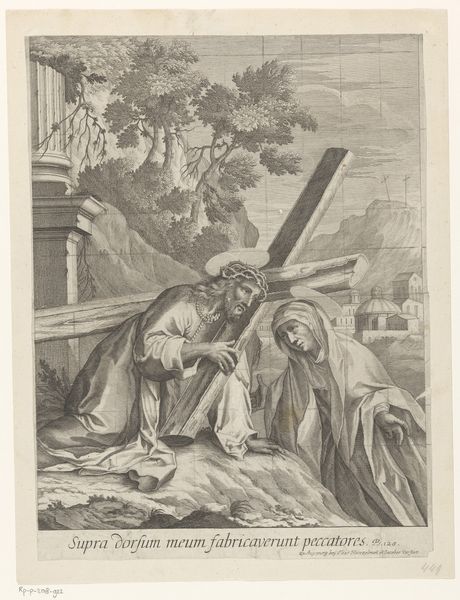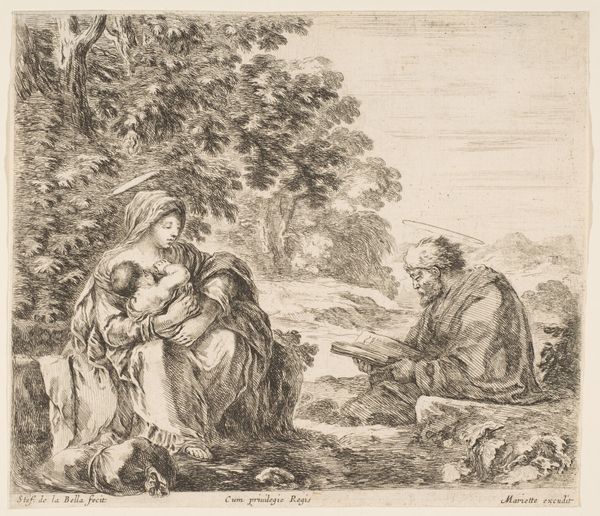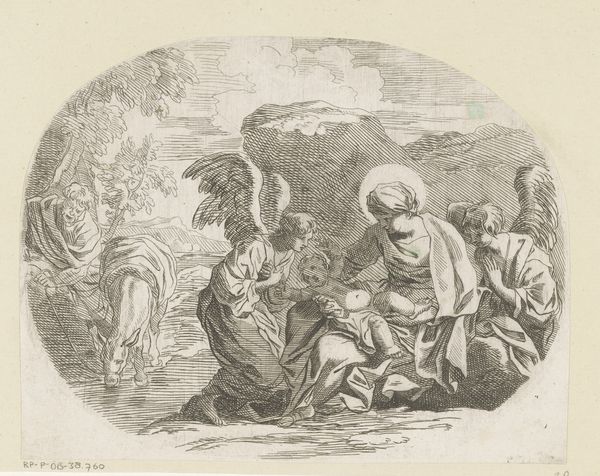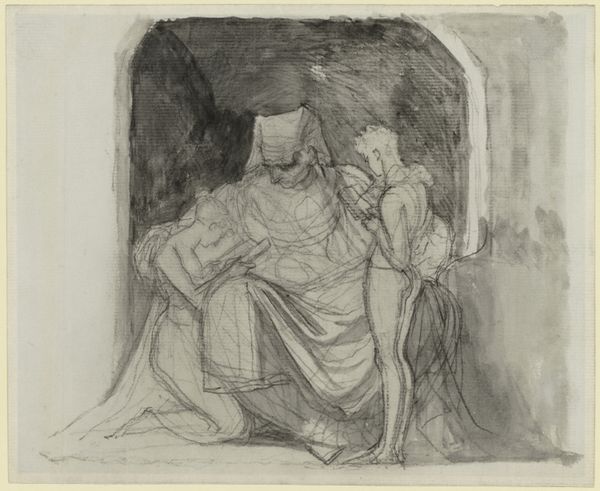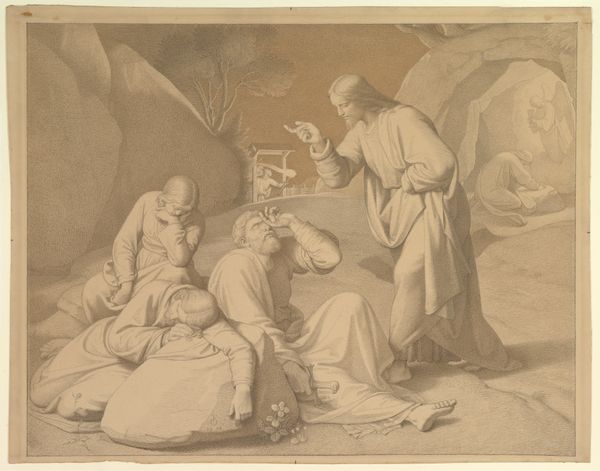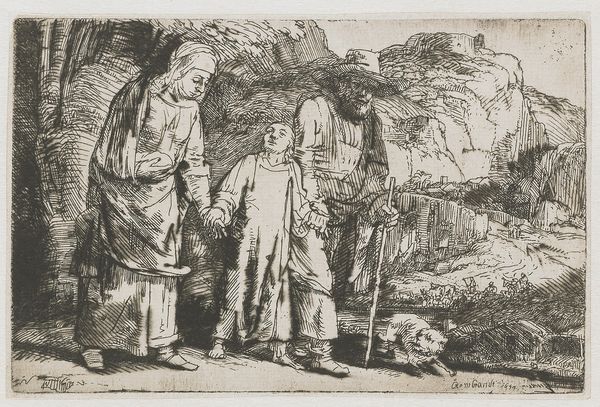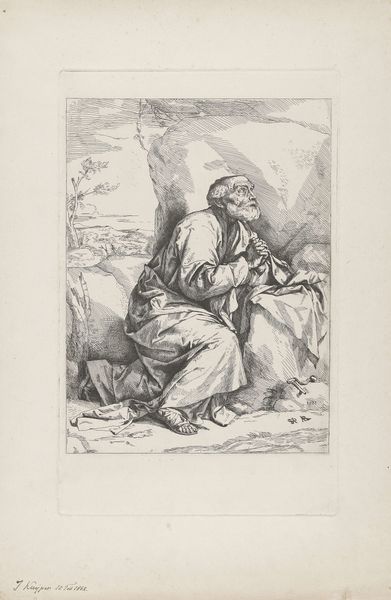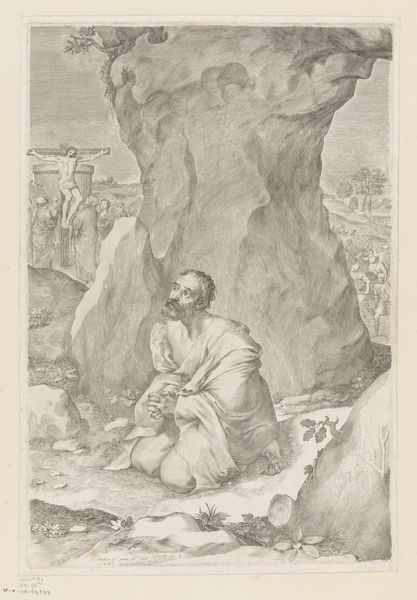
drawing, paper, watercolor, ink, indian-ink
#
drawing
#
narrative-art
#
figuration
#
paper
#
oil painting
#
watercolor
#
ink
#
indian-ink
#
romanticism
#
history-painting
#
watercolor
Copyright: Public Domain
Curator: Here we have Philipp Veit’s “The Two Marys at the Grave," crafted before 1837. What strikes you first about this piece? Editor: Melancholy. The muted colors, the drooping postures...it speaks of profound grief. What is it composed of? Curator: It's a delicate work combining ink, watercolor, and possibly Indian ink on paper. The drawing has elements characteristic of Romanticism: it seems concerned with evoking feeling, specifically suffering. The composition is notable, creating parallel forms between the figures. The halos read almost like afterthoughts above the draped figures, each hunched over as if heavy with an unimaginable pain. Editor: Absolutely. The artist's material choices underline this effect. The watercolours create a translucent layering, and give an ethereal quality appropriate to a moment on the border between the mortal and immortal worlds. It speaks of the labour-intensive, repetitive acts of sorrow, perhaps the work the women themselves undertook—preparing food, cleaning, mending—during Jesus's life, which they can no longer do for him. What can we say about the work's physical setting in relation to this meaning? Curator: I see a structural emphasis on balance and counterbalance: the women themselves frame the solid tomb structure, almost mirroring each other in their expressions of sorrow. Consider also the contrasting values - light from the rising sun meets the weight of grief in the shadows that subtly contour the folds of their clothing. Veit is able to orchestrate this tension skillfully and deliver an iconic image. Editor: The contrast with the cool stone creates a profound sense of place; we can imagine what it felt like for these women to be at this place on this day. Romanticism so often looked at nature as the embodiment of God, and here, it looks like the landscape is physically rejecting these women's faith; a tomb built of immovable stone! Curator: Your perspective provides valuable insight into the significance of the chosen materials for Veit's intentions, bringing forth dimensions easy to overlook in an aesthetic reading alone. Editor: Thank you, it's rewarding to discuss such a layered image. Considering both form and context offers such different and enriching viewpoints on experiencing a work like this one.
Comments
No comments
Be the first to comment and join the conversation on the ultimate creative platform.
